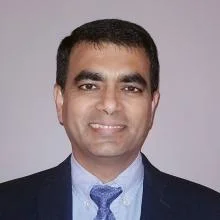CIOs are increasingly looking outside their own organizations for new ideas and fresh perspectives to help drive innovation. But who are they talking to? Where are they looking?
We caught up with CIOs who recently won the 2019 Houston CIO of the Year ORBIE Awards to find out some of the ways they seek innovation beyond their own walls. The awards were presented by the Houston CIO Leadership Association, a professional community that annually recognizes CIOs for their excellence in technology leadership.
These award-winning CIOs all have their trusted methods for scouting out innovation – from strategically using speaking opportunities at events to learn more about key technologies to turning to wide-eyed interns who may have ideas that veteran employees don't spot. Read on to learn some of their pro tips and examples for identifying new ideas.
[ How does your EQ stack up? Read our related article, 8 powerful phrases of emotionally intelligent leaders. ]
1. Turn to your customers
Enterprise Houston CIO of the Year

Kristy Simonette, Senior Vice President of Strategic Services and CIO, Camden Property Trust: Sources of innovation beyond the Camden walls come from all of the likely suspects. We attend progressive conferences featuring futurist speakers; we tap into relationships we have with VC firms backing start-ups within the multi-family space; and we look at the hospitality and retail industries for inspiration. However, the best ideas come from our customers. We have very high customer engagement through many channels, including: surveys, annual ethnographic studies and co-creation workshops. We ask our customers – the residents of our 60,000 apartments – what THEY want, and then we pilot ideas and solutions.
One example of this is the demand for a smart building access solution – think curb-to-couch access using only your smartphone. No more parking garage remotes, card keys, fobs or keys … just an app on your smartphone that allows residents to enter into their community and apartment, including bonus functionality to grant visitors temporary or permanent access with a text. We went on the hunt for a smart access platform we could leverage and manage all of our apartments, but it just didn’t exist. Instead of defeat, we are incubating our own solution which will be deployed to our portfolio! This just proves the saying, necessity is the mother of invention.
2. Look outside your industry; ask vendors new questions
Corporate Houston CIO of the Year

Antonio Marin, Vice President of IT, WCA Waste Corporation: As a CIO, I need to keep an open mind about technologies that are not designed for my industry but could apply to it. I like to learn from my business partners and professional colleagues, asking my team and myself: “How does that apply to us?" For example, at WCA we learned from a colleague in real estate about their application of RPA and machine learning to document and invoice management. Their system was geared and sold as a real estate solution, but the core idea and architecture applied to us – and any business for that matter.
Additionally, we maintain collaboration sessions with our key vendors who are beginning to get comfortable with us asking uncomfortable questions. We tend to analyze their solutions by asking a lot of “what if” questions and push their technology from a different angle. We also take our solutions and invite them to enhance them or challenge our findings.
3. Use speaking engagements as learning opportunities
Super Global Houston CIO of the Year

Alfred Lindseth, Senior Vice President of Technology, Process and Risk Management, Plains All American: I am constantly looking to expand my network and collaborate in ways to bring us new ideas, help solve our problems, or advance us in meaningful ways. These days that’s usually the only reason I agree to speak or facilitate at events or gatherings (with an exception being causes I care about). For example, I am on the leadership team at the Evanta CIO Summits and lead two boardroom sessions, one in Operational Technology (OT) cybersecurity and another on transformational initiatives. These are two areas which are high priority to us, so it provided an opportunity to validate our ideas and approach, as well as hearing how others were attacking the same issues. I am leading a cyber OT team right now for a National Petroleum Council project for the U.S. Department of Energy, which has given me a glimpse into other management systems and helps our internal transformational effort.
Additionally, I am engaged with some partners out of Austin where I get a good look at startups and modern technology, which is important in crafting Plains strategy. I don’t want to work problems from scratch if someone else has already invested a lot of time and effort – if I can help it. But to truly have a dialogue, you must have something of value to offer as well.
4. Take a customer zero approach
Global Houston CIO of the Year

Scott Crowder, Senior Vice President and CIO, BMC: Our internal BMC IT organization has a customer zero approach, where we collaborate closely with our research and development team to test all our software before it goes out to customers. This enables our team to create bi-directional partnerships with not only our internal customers, but also our external customers, including our product partners.
We also seek partnerships with companies that share the same challenges. We believe in developing trusted relationships with our product partners by keeping open communication on business activities such as issues, opportunities, and collaborative activities. With this approach, our team is able to develop fresh and innovative ideas with our partners. The process concludes by developing solutions that ultimately transform the way we work and operate at BMC IT and make available as services to the BMC community.
5. Create strategic partnerships with third-party vendors
Large Enterprise Houston CIO of the Year

Sameer Purao, CIO, Austin Industries: Innovation requires a different mindset for exploration, risk-taking, failure, and most importantly, a passion for making a change. We have handpicked key members to build a dedicated team for evaluating and building innovative technology solutions for Austin. This team actively participates in technology forums and workshops to stay up-to-date with the rapid digital advancements. We also collaborate with our peer companies to understand technology trends within and across the industry.
Additionally, we have strategic partnerships with three third-party vendors who are willing to invest in developing and piloting leading-edge technology solutions which would push our industry to a new level of disruption. Intern recruiting is another great source of seeking “out of the box” ideas from the dreamers who are passionately looking to make a difference in the world. For example, we recently had an intern develop a solution to digitize field operations leveraging a virtual reality product. At Austin, we believe that it is important to cultivate a culture for innovation, enabling our employees and partners to openly collaborate.
6. Evaluate emerging technology closely
Nonprofit/Public Sector Houston CIO of the Year

Myra Davis, Senior Vice President and CIO, Texas Children’s Hospital: We are actively taking several steps to bring emerging technologies into our organizations. Currently, we are socializing new solutions brought to us by our technology partners. We’re investigating ways to incorporate technologies such as artificial intelligence, Alexa, RPA, and virtual reality to name a few. We’re working with our clinical and business partners to assess what it will take to implement those technologies and make them successful in our environment. Importantly, we are focusing on what a successful technology operating model would look like once those digital solutions are implemented. We’re not just incorporating technology for technology’s sake. We believe in comprehensive solutions that encompass technology, people, and process. We’ve had success with this approach recently, and are just weeks away from implementing telemedicine visits for our health plan members.
[ Why is adaptability the new leadership power skill? Read our report from HBR Analytic Services: Transformation Masters: The New Rules of CIO Leadership ]






